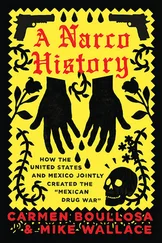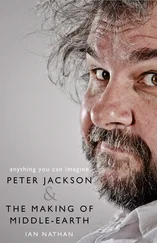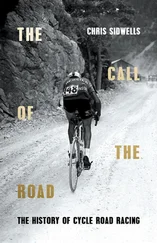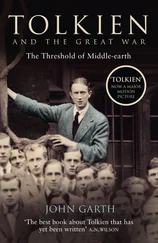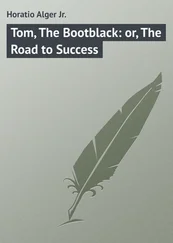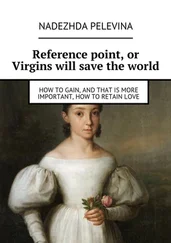In any case the narrator has his thumb firmly on the balance. His voice is very prominent throughout The Hobbit (as it is not in The Lord of the Rings ), and as has been said it provides ‘a very firm moral framework by which to judge’ 12 – elves are good, goblins bad, dwarves, eagles, dragons, men and Beorn all in different ways in between. Besides building up morality, though, it more interestingly tears down expectation. The narrator’s favourite phrase is ‘of course’, but this usually introduces something unexplained or unpredictable: ‘That, of course, is the way to talk to dragons’, or ‘He knew, of course, that the riddle game was sacred’, or ‘It was often said … that long ago one of the Took ancestors must have taken a fairy wife. That was, of course, absurd’. Sometimes these and similar remarks introduce information. More often they create a sense that more information exists round the edges of the story, and that events are going according to rules only just hinted at, but rules just the same. Adjectives like ‘the famous Belladonna Took’ or ‘the great Thorin Oakenshield himself ’ imply a depth of history, statements like ‘no spider has ever liked being called Attercop’ one of experience. The frequent remarks about legendary creatures of the ‘Trolls’ purses are the mischief’ kind furthermore blur ordinary experience into the magical, while the question ‘what would you do, if an uninvited dwarf came and hung his things up in your hall?’ is very much in the style of ‘have you stopped beating your wife?’ The child reader senses, perhaps, the sportiveness of all this, and delights in it; the adult, as he goes along, finds himself succumbing to the ancient principle that ‘redundancy is truth’ – the more unnecessary details are put in the more lifelike we take fiction to be. The underlying point, though, is that the narrator is there cumulatively to express a whole attitude to the archaic-heroic setting: casual, matter-of-fact, even unimpressed, but accordingly lulling. He gets the landscape, the characters and the ‘rules’ through the modern barriers of disbelief and even, potentially, of contempt.
The way The Hobbit works in fact shows up well in any comparison of Chapter 2, ‘Roast Mutton’, with its analogue in the Grimms’ folk-tale of ‘The Brave Little Tailor’. In this latter a tailor (the trade was synonymous with feebleness, as in Shakespeare’s Henry IV Part II III ii) kills seven flies at a blow, and is so emboldened that he starts a career of violence and monster-killing. He bluffs his way through a contest of strength with one giant, and frightens off a whole gang of them: ‘each of them had a roast sheep in his hand and was eating it’. Sent by the king to catch two more, he hides up a tree and throws stones at them till they quarrel and kill each other: ‘they tore up trees in their agony and defended themselves’, he says airily when he shows the bodies, ‘but all that does no good when a chap like me comes along who can kill seven with one blow!’ Bilbo starts off very much as a ‘little grocer’, but he never shows anything like the ‘little tailor’s’ resource or effrontery; an omni-competent character would destroy any modern story’s action. Instead he is presented very much as a reader-surrogate, driven on by shame to try to be ‘The Master Thief’ (like the character in Asbjörnsen and Moe’s Norse folktale) but hampered by utter ignorance of the rules of the game. He is caught by one ‘fact’ which neither he nor the reader could have predicted – trolls’ purses talk – and saved by two more: wizards can ventriloquise, and ‘trolls, as you probably know, must be underground before dawn, or they go back to the stuff of the mountains they are made of, and never move again’. ‘As you probably know’ is here the final blow in Tolkien’s strategy of ‘counter-realism’. Nobody knows that; indeed it isn’t true; in a traditional tale no narrator could get away with so shamelessly exploiting the gap between his world and his listener’s, because of course there wouldn’t be one! However in The Hobbit the combined assurance of Gandalf, the narrator, the trolls and the dwarves outweighs the ignorance of Bilbo, and the reader. As it happens the belief about being underground before dawn is as traditional as belief in trolls and dwarves at all, going back to the Elder Edda and the end of the Alvíssmál, where Alvíss the dwarf is kept talking till daylight by Thórr, and so turned to stone. * Inventive resource is very strong in The Hobbit , over words and races and characters and events. The book’s distinguishing characteristic, though, is its sense that all these things come from somewhere outside and beyond the author, forming a Zusammenhang as solid as everyday’s and on occasion no more irrational.
This ‘illusion of historical truth and perspective’ is, of course, as Tolkien himself said of Beowulf , ‘largely a product of art’ (‘Monsters’, p. 247). And sometimes the art ran out. Tolkien himself admitted ( Observer , 20 February 1938) that twice he got stuck. He did not say where, leaving that for later researchers to make fools of themselves over, but it may be argued that the first few chapters of The Hobbit consist mostly of disengagement and playing down the readers’ collective sense of doubt. As late as the start of chapter 4 the company is halted again (for the third time), and there is a sense of the author groping for intellectual justification. In the mountain-storm Bilbo looks out and sees that ‘across the valley the stone-giants were out, and were hurling rocks at one another for a game, and catching them, and tossing them down into the darkness where they smashed among the trees far below’. Giants never enter the Tolkien universe again – Gandalf accepts their existence for a second in chapter 7 – and the passage is a failure of tone; it reads like an old interpretation of giants as ‘nature-myth’, i.e. as personifications of the avalanche like Thórr and his hammer personifying thunder and lightning. This is too allegorical for Middle-earth. But the story takes off very shortly afterwards, with the capture by the goblins (incidentally still too close to munitions workers as the trolls were to labourers), the escape, the goblin runners pursuing ‘swift as weasels in the dark’, and Bilbo’s forcible detachment from the dwarves. Crawling along the tunnel hours later ‘his hand met what felt like a tiny ring of cold metal lying on the floor of the tunnel. It was a turning point in his career’, comments Tolkien, ‘but he did not know it.’ A turning-point in Tolkien’s career too, for from this came most of his subsequent inspiration – Gollum, Sauron, 13 eventually The Lord of the Rings itself.
But no more than Bilbo did Tolkien realise this at the time. As he testified later ( LOTR p. xv), glimpses in The Hobbit ‘had arisen unbidden of things higher or deeper or darker than its surface: Durin, Moria, Gandalf, the Necromancer, the Ring’. The ring changed its significance even between editions of The Hobbit. 14 In the first matters were relatively straightforward: Bilbo found the ring, met Gollum, they agreed to hold a riddle-contest, the stakes being Bilbo’s life against Gollum’s ‘precious’. Bilbo won, but since by accident he’d acquired Gollum’s ‘precious’ already he asked to be shown the way out instead. The sequence works, it excuses Bilbo of any charge of theft (he’d won the ring fair and square) but as anyone familiar with the Ring in its later manifestations will see, the amazing thing is Gollum’s readiness to bet his ‘precious’, bear the loss of it, and then offer to show the way out as a douceur. ‘I don’t know how many times Gollum begged Bilbo’s pardon. He kept on saying: “We are ssorry; we didn’t mean to cheat, we meant to give it our only pressent, if it won the competition”’ ( Hobbit first edition, p. 92). In the second and subsequent editions his last words are ‘Thief! Thief! Thief! Baggins! We hates it, we hates it for ever!’ Furthermore Gollum’s charge is arguably true, since in this version the deal was Bilbo’s life against any nominated service, such as showing the way out. In both versions Bilbo gets the ring and the exit, but in the latter one it is his claim to the ring which is shaky.
Читать дальше

